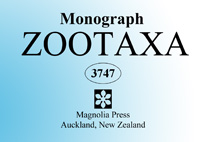Abstract
This paper provides a comprehensive list of the freshwater and terrestrial tardigrade fauna reported from the Americas (North America, South America, Central America and the West Indies), their distribution in the Americas, and the substrates from which they have been reported. Data were obtained from 316 published references. Authors’ identifications were accepted at face value unless subsequently amended. Taxa were assigned to sub-national units (states, provinces, etc.). Many areas, in particular large portions of Central America and the West Indies, have no reported tardigrade fauna.
The presence of 54 genera and 380 species has been reported for the Americas; 245 species have been collected in the Nearctic ecozone and 251 in the Neotropical ecozone. Among the tardigrade species found in the Americas, 52 are currently considered cosmopolitan, while 153 species have known distributions restricted to the Americas. Based on recent taxonomic revision of the genus Milnesium, the vast majority of records of M. tardigradum in the Americas should now be reassigned to Milnesium tardigradum sensu lato, either because the provided description differs from M. tardigradum sensu stricto or because insufficient description is provided to make a determination; the remainder should be considered Milnesium cf. tardigradum.
Most terrestrial tardigrade sampling in the Americas has focused on cryptogams (mosses, lichens and liverworts); 90% of the species have been collected in such substrates. The proportion of species collected in other habitats is lower: 14% in leaf litter, 20% in soil, and 24% in aquatic samples (in other terrestrial substrates the proportion never exceeds 5%). Most freshwater tardigrades have been collected from aquatic vegetation and sediment. For nine species in the Americas no substrates have been reported.

